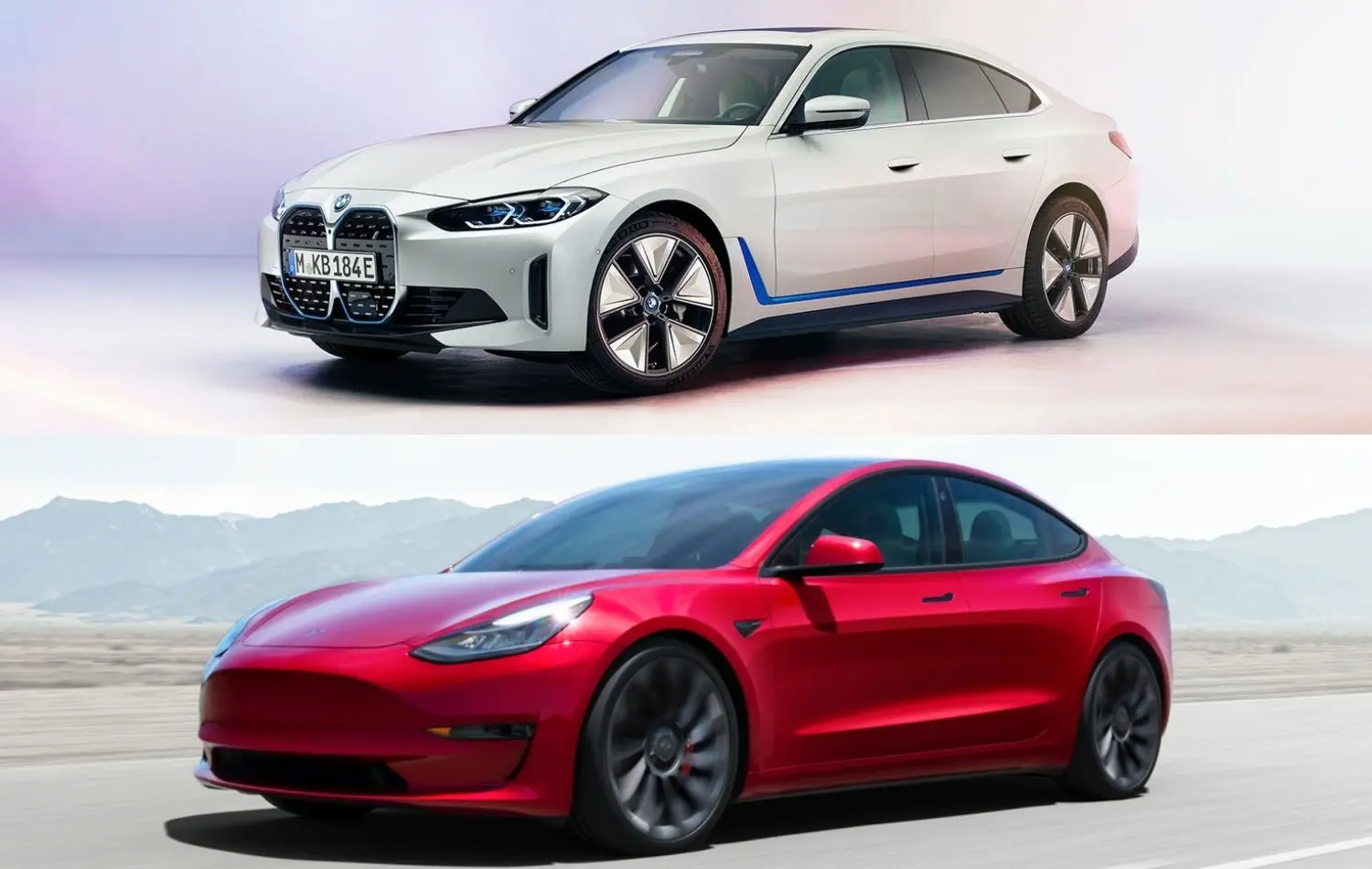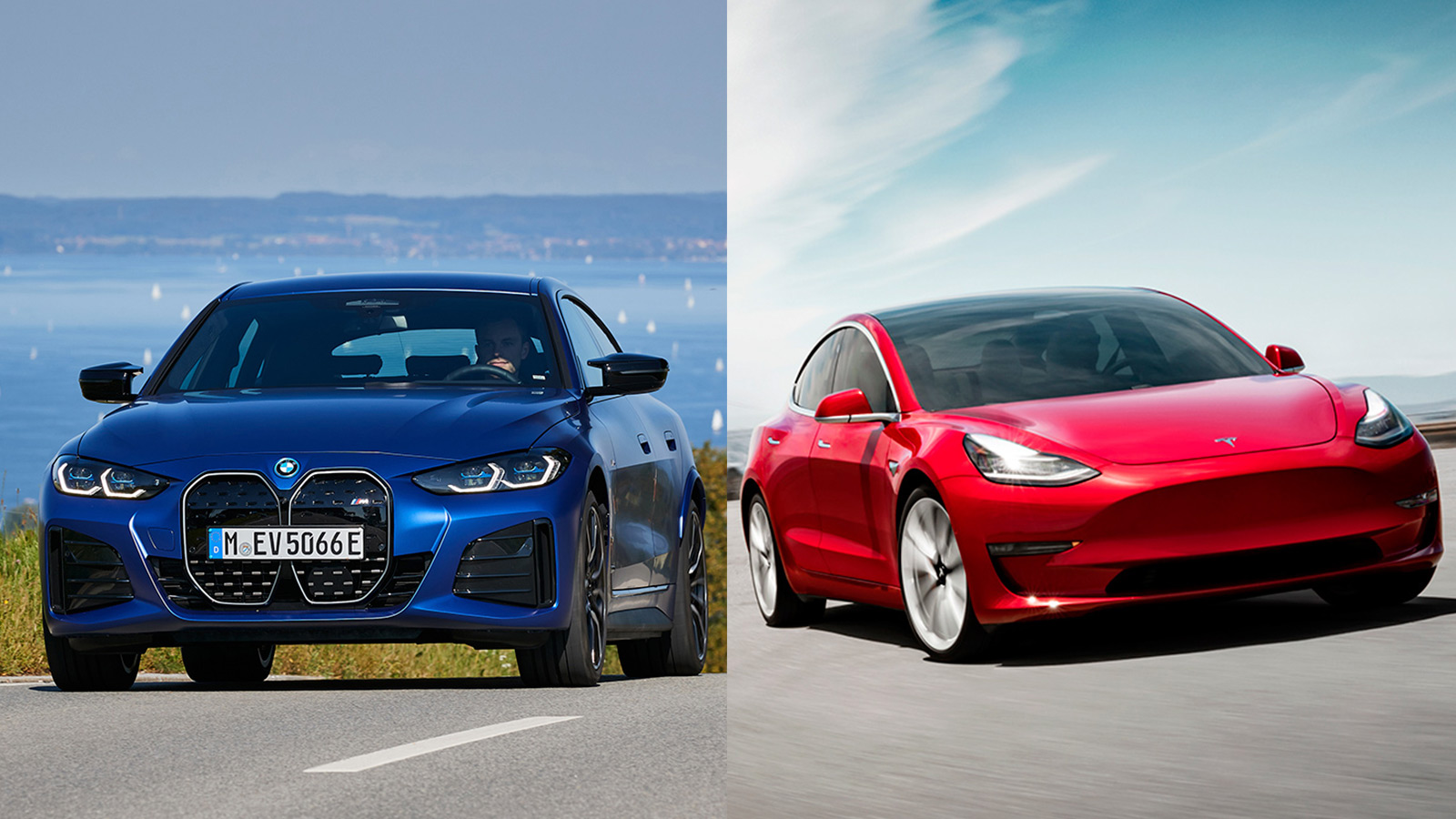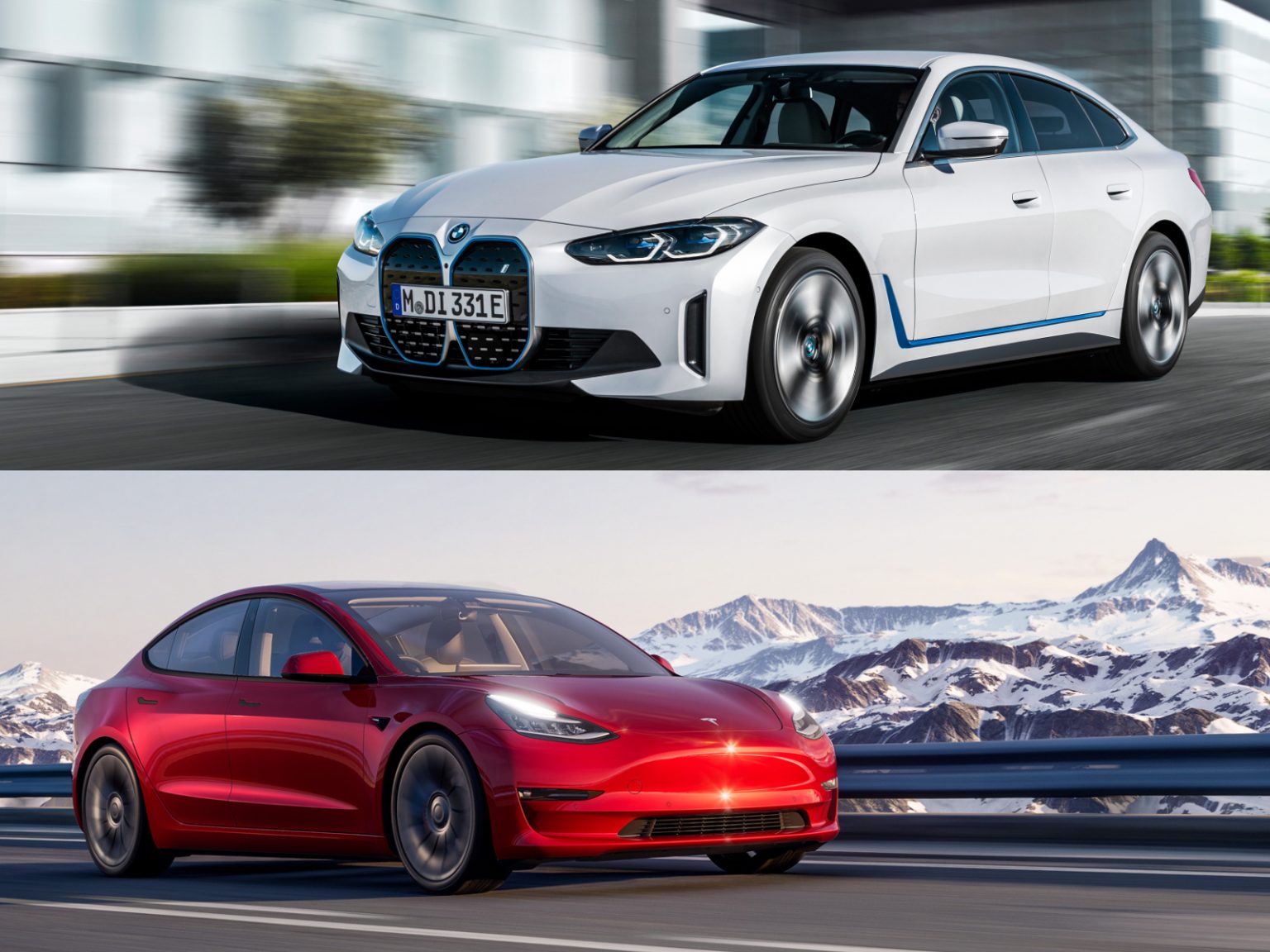
The Electric Showdown: 2025 BMW i4 vs. Tesla Model 3
The electric car market is booming, and two titans of the industry, BMW and Tesla, are locked in a fierce battle for supremacy. The 2025 BMW i4 and the Tesla Model 3, both sleek and technologically advanced, stand as the flagships of their respective brands, vying for the hearts and wallets of environmentally conscious drivers. This comprehensive analysis delves deep into the intricacies of these two electric powerhouses, comparing their performance, features, technology, and overall value proposition.
Performance: A Tale of Two Approaches
The BMW i4 and Tesla Model 3 both offer exhilarating performance, but they achieve it through different approaches. The i4, available in multiple variants, boasts a potent electric powertrain that delivers an impressive blend of power and efficiency. The top-of-the-line M50 model, with its dual electric motors, generates a staggering 536 horsepower and 586 lb-ft of torque, propelling it from 0 to 60 mph in a blistering 3.7 seconds.
On the other hand, the Tesla Model 3, known for its focus on acceleration, offers a more refined and responsive experience. The Performance variant, with its dual-motor setup, achieves an even quicker 0-60 mph time of 3.1 seconds, thanks to its powerful 450 horsepower and 471 lb-ft of torque.
Range and Charging: A Close Race
Range anxiety is a common concern for electric vehicle owners, and both the i4 and Model 3 address it effectively. The BMW i4, depending on the trim level, offers an EPA-estimated range of up to 301 miles. The Tesla Model 3, with its larger battery pack, boasts a slightly higher range, topping out at 353 miles on a single charge.
In terms of charging, both vehicles offer impressive capabilities. The i4 supports fast charging, allowing for a 100-mile range boost in approximately 10 minutes. The Tesla Model 3, with its extensive Supercharger network, offers unparalleled charging convenience, with fast charging speeds that can add up to 170 miles of range in just 15 minutes.
Interior and Technology: A Luxurious vs. Minimalist Approach
Inside the cabin, the BMW i4 embraces a luxurious and driver-focused design. Its interior features high-quality materials, a spacious and comfortable seating arrangement, and a driver-oriented cockpit. The iDrive infotainment system, a staple of BMW vehicles, delivers a seamless user experience with intuitive controls and a large, high-resolution touchscreen.
The Tesla Model 3, in contrast, opts for a minimalist and futuristic interior. Its simple design emphasizes clean lines and a spacious cabin, while the large 15-inch touchscreen serves as the central control hub for all vehicle functions. The Model 3’s minimalist approach may appeal to some, while others may miss the tactile buttons and physical controls found in the i4.
Safety and Driver Assistance Features: A Feature-Rich Arsenal
Both the i4 and Model 3 prioritize safety and offer an array of advanced driver assistance features. The BMW i4 comes standard with a suite of safety technologies, including automatic emergency braking, lane departure warning, blind spot monitoring, and adaptive cruise control. Its optional Driving Assistant Professional package further enhances safety with features like lane keeping assist, automatic lane change, and a semi-autonomous driving mode.
The Tesla Model 3, known for its pioneering Autopilot system, offers a comprehensive suite of driver assistance features. Its Autopilot system, with its advanced radar and camera sensors, provides features like adaptive cruise control, lane centering, and automatic lane changes. The Model 3 also offers Full Self-Driving Capability (FSD), an optional package that enables advanced features like automated parking and traffic light and stop sign recognition.
Value Proposition: A Balancing Act
The BMW i4 and Tesla Model 3 represent compelling value propositions in the electric car market. The i4, with its luxurious interior, powerful performance, and comprehensive suite of features, appeals to drivers seeking a premium driving experience. Its starting price, however, is slightly higher than the Model 3.
The Tesla Model 3, with its focus on affordability, offers a more accessible entry point into the electric vehicle market. Its impressive performance, long range, and extensive Supercharger network make it a compelling choice for budget-conscious drivers.
Conclusion: A Choice Based on Individual Preferences
The choice between the 2025 BMW i4 and the Tesla Model 3 ultimately boils down to individual preferences and priorities. The i4, with its luxurious interior, powerful performance, and premium brand appeal, caters to drivers seeking a refined and sophisticated driving experience. The Model 3, with its affordability, impressive acceleration, and extensive Supercharger network, is an ideal choice for drivers prioritizing practicality and value.
Both vehicles represent the pinnacle of electric car technology, offering impressive performance, advanced features, and a glimpse into the future of sustainable transportation. Ultimately, the best choice depends on your specific needs and desires.
Detailed Comparison Table:
| Feature | 2025 BMW i4 | Tesla Model 3 |
|---|---|---|
| Price | $56,300 (eDrive40) – $74,900 (M50) | $46,990 (Standard Range) – $57,990 (Performance) |
| Performance | 335 hp (eDrive40), 536 hp (M50) | 283 hp (Standard Range), 450 hp (Performance) |
| 0-60 mph | 5.7 seconds (eDrive40), 3.7 seconds (M50) | 5.3 seconds (Standard Range), 3.1 seconds (Performance) |
| Range (EPA) | Up to 301 miles | Up to 353 miles |
| Charging | Fast charging up to 100 miles in 10 minutes | Supercharger network with fast charging up to 170 miles in 15 minutes |
| Interior | Luxurious, driver-focused, high-quality materials | Minimalist, spacious, large touchscreen |
| Technology | iDrive infotainment system, large touchscreen, advanced driver assistance features | Large touchscreen, Autopilot system, Full Self-Driving Capability (optional) |
| Safety | Standard safety features, optional Driving Assistant Professional package | Standard safety features, Autopilot system, Full Self-Driving Capability (optional) |
| Overall Value | Premium driving experience, luxurious interior, powerful performance | Affordability, impressive acceleration, extensive Supercharger network |
Beyond the Specs:
While the specifications provide a clear picture of the technical capabilities of both vehicles, it’s important to consider the intangible factors that contribute to the overall driving experience.
BMW i4:
- Driving Dynamics: The BMW i4 delivers a balanced and engaging driving experience. Its precise steering, responsive handling, and powerful electric motors make it a joy to drive on winding roads.
- Luxury and Refinement: The i4’s interior exudes luxury and sophistication. Its high-quality materials, comfortable seats, and advanced technology create a premium driving environment.
- Brand Heritage: BMW has a long and storied history of producing high-performance vehicles. The i4 carries this legacy forward, offering a blend of performance and luxury that is synonymous with the BMW brand.
Tesla Model 3:
- Acceleration and Responsiveness: The Model 3’s acceleration is truly exhilarating. Its instantaneous torque and responsive handling make it feel incredibly quick and agile.
- Technology and Innovation: Tesla is known for its cutting-edge technology, and the Model 3 is no exception. Its Autopilot system, large touchscreen, and over-the-air software updates set it apart from the competition.
- Charging Convenience: The Model 3’s extensive Supercharger network provides unparalleled charging convenience. With thousands of Superchargers across the globe, drivers can easily find a charging station wherever they go.
The Verdict:
Ultimately, the decision of whether to choose the 2025 BMW i4 or the Tesla Model 3 comes down to your personal preferences and priorities. If you prioritize a luxurious and refined driving experience, the i4 is an excellent choice. If you value affordability, exhilarating performance, and cutting-edge technology, the Model 3 is a compelling option. Both vehicles offer an impressive blend of performance, technology, and sustainability, making them worthy contenders in the ever-evolving electric car market.







